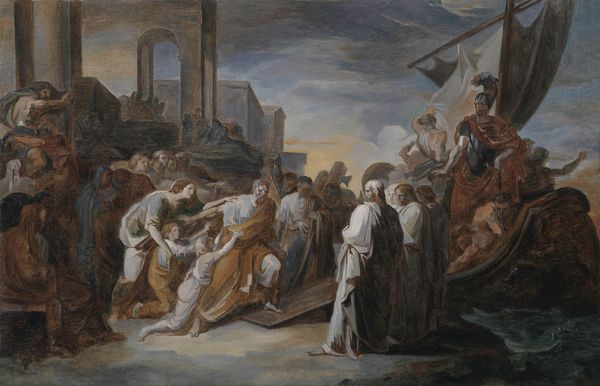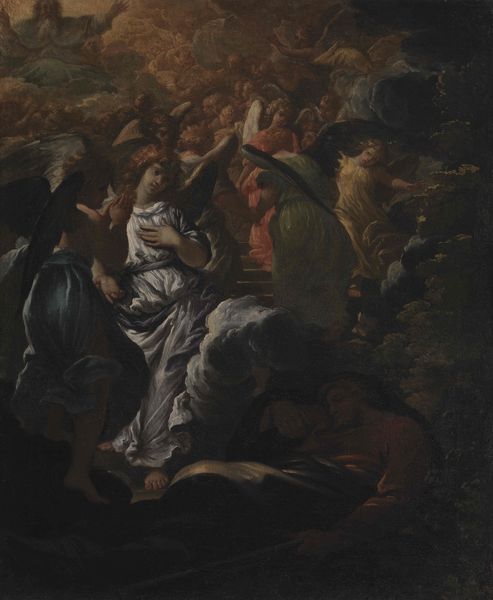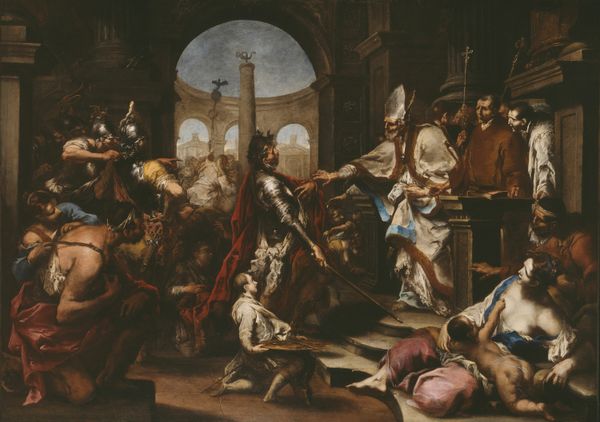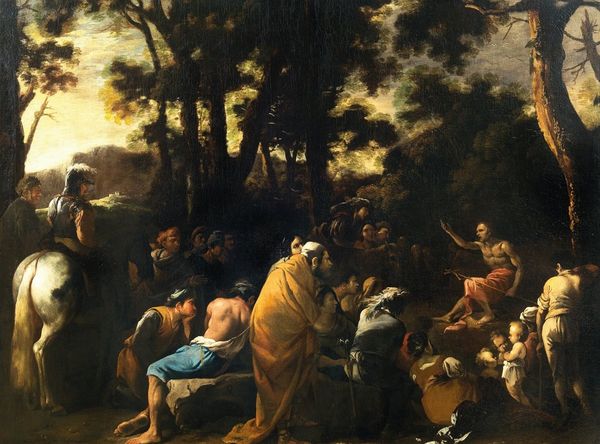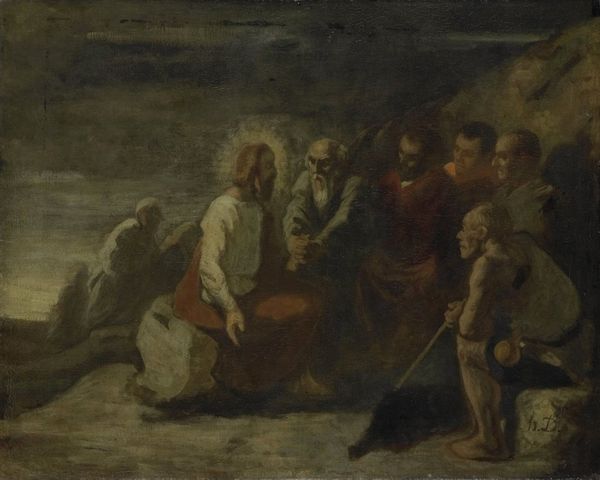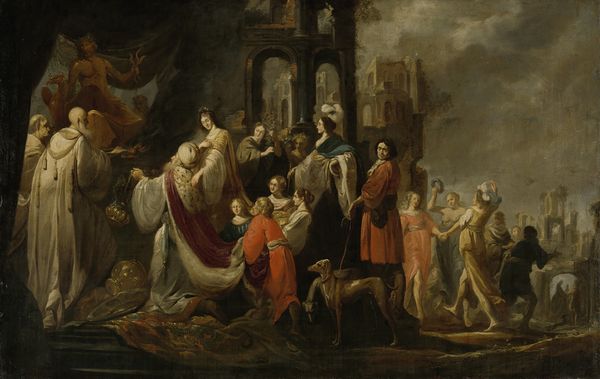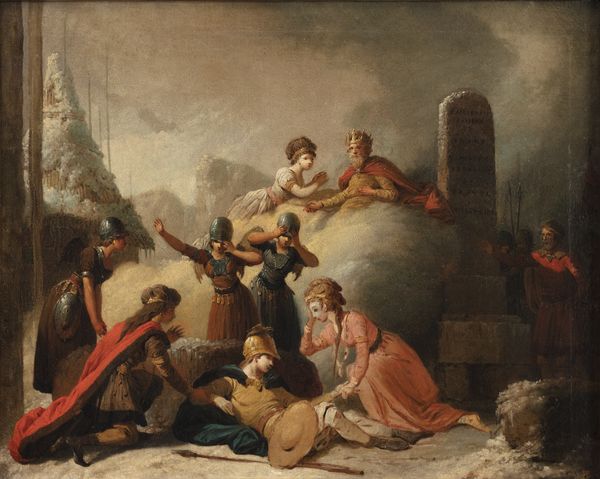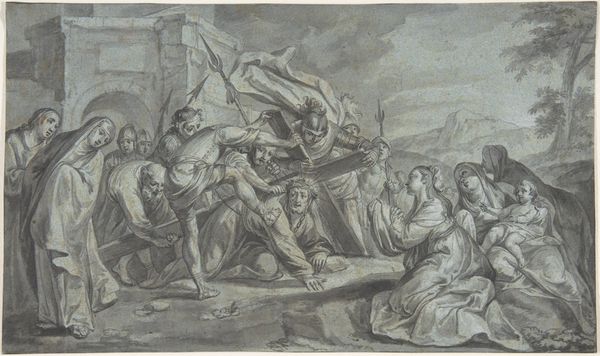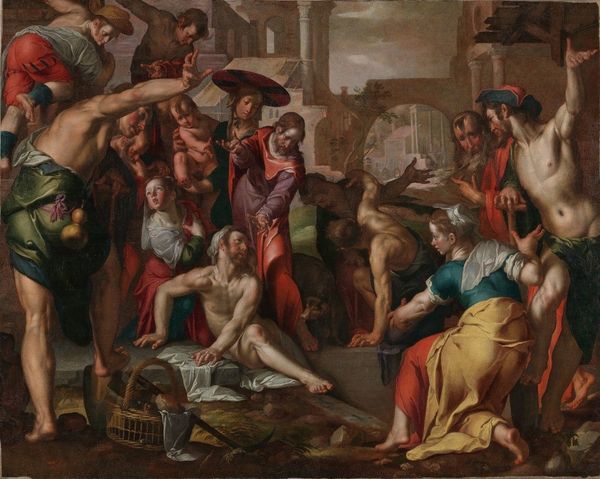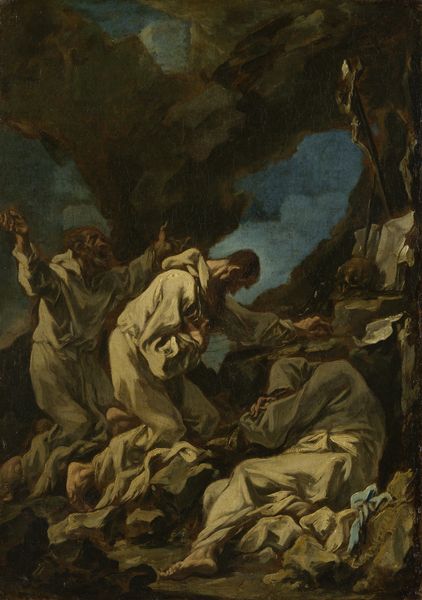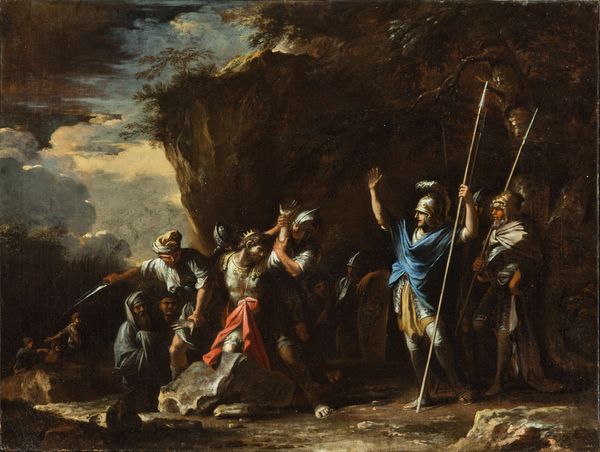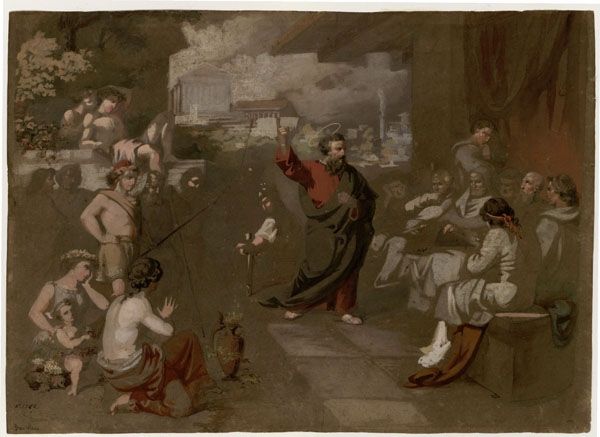
painting, oil-paint
#
narrative-art
#
baroque
#
painting
#
oil-paint
#
landscape
#
figuration
#
oil painting
#
genre-painting
#
history-painting
Dimensions: height 160 cm, width 229 cm, depth 10.2 cm
Copyright: Rijks Museum: Open Domain
Editor: This is Jacob Hogers' "The Meeting of Jacob and Esau," painted in 1655 using oil on canvas. I'm immediately struck by the composition. The arrangement of figures and landscape elements almost feels staged, deliberately placed to evoke a sense of drama. What do you see when you look at it? Curator: I'm drawn to how the painting deploys contrasting zones of visual density. On the left, a relatively static and brightly lit grouping of figures sits against a backdrop of classical ruins. Contrast that with the right, a densely packed procession fading into a dark and turbulent landscape. Note how this contrast creates a powerful diagonal tension across the canvas. Do you perceive that same compositional pull? Editor: Absolutely, the lighting really enhances that. The left feels almost bathed in a serene glow, while the right is shrouded in shadow, which guides my eye to that tense encounter between the two men. What do you make of Hogers' brushwork? Curator: Notice the impasto technique, particularly in the figures' drapery and the rendering of the landscape. The visible brushstrokes don’t just depict form, they also create a tactile quality and reflect light, enhancing the drama of the scene. Consider, too, how the relatively muted palette serves to unify these disparate elements, grounding them in a shared visual space. Are there specific details that stand out to you in the execution? Editor: I noticed that despite the dramatic subject matter, there's a remarkable balance. The artist maintains this visual harmony, preventing the emotional intensity from overwhelming the artistic structure. It’s quite clever. Curator: Precisely! Hogers uses compositional elements to achieve both dynamism and equilibrium, guiding the viewer’s experience with intention and expertise. Editor: Seeing the visual techniques he employs has made this far more interesting. I was only considering the dramatic scene before. Curator: Focusing on Hogers' formal choices reveals an even richer artistic intention. Close visual analysis opens the work, providing new layers of interpretation.
Comments
No comments
Be the first to comment and join the conversation on the ultimate creative platform.
